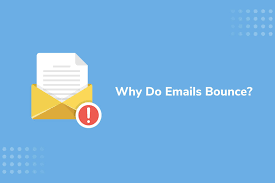Introduction
Email communication has revolutionized the way we connect and communicate in both personal and professional settings. However, not all emails reach their intended recipients. Sometimes, they bounce back, causing frustration and uncertainty. Understanding why emails bounce and how to determine if an email address will bounce is crucial for effective communication. In this comprehensive guide, we will explore the concept of email bounces, discuss popular methods to check if an email address will bounce, and provide practical tips to minimize bounces and improve your email deliverability.
What is an Email Bounce?
An email bounce occurs when an email cannot be delivered to the intended recipient and is returned to the sender. Bounces can happen for various reasons, such as invalid or non-existent email addresses, full mailboxes, or email servers blocking the delivery.
Bounces are categorized into two main types:
1. Soft Bounces
Soft bounces are temporary delivery failures. They occur when the recipient's mailbox is temporarily unavailable or the email server is experiencing issues. Soft bounces are typically caused by factors like full mailboxes, temporary server downtime, or network congestion. In most cases, soft bounces will be retried automatically by the sender's email server, and the email will eventually be delivered.
2. Hard Bounces
Hard bounces are permanent delivery failures. They occur when an email cannot be delivered due to permanent reasons, such as an invalid or non-existent email address. Hard bounces indicate a fundamental problem with the recipient's email address, and further attempts to deliver the email will likely be unsuccessful. Hard bounces are critical indicators that the email address should be removed from future email campaigns to maintain a good sender reputation.
Methods to Check if an Email Address Will Bounce
1. Email Verification Tools
Email verification tools, such as NeverBounce and Campaign Monitor, can help determine if an email address will bounce. These tools analyze the email address and check its validity and deliverability. They verify if the email format is correct, if the domain exists, and if the mailbox is active. By using these tools, you can identify potential bounce risks before sending your email campaigns, ensuring higher deliverability rates.
2. SMTP Validation
SMTP (Simple Mail Transfer Protocol) validation is another method to check if an email address will bounce. It involves establishing a connection with the recipient's email server and simulating the email delivery process without actually sending the email. The server response determines whether the email address is valid and deliverable. SMTP validation can provide more accurate results but may require technical knowledge or the use of specialized software.
3. Manual Verification
In some cases, manually verifying an email address can provide insights into potential bounce risks. This involves conducting research and using available resources to validate the email address. You can check the email format, search for the recipient's online presence or contact information, and verify the domain's credibility. While manual verification is time-consuming and may not guarantee accuracy, it can be a helpful approach for critical or high-value communications.
Tips to Minimize Bounces and Improve Email Deliverability
1. Use Double Opt-In
Implementing a double opt-in process ensures that subscribers enter a valid email address and confirm their subscription. This reduces the chances of invalid or mistyped email addresses being added to your email list, minimizing the risk of bounces.
2. Regularly Clean Your Email List
Periodically review and clean your email list to remove inactive or bouncing email addresses. Regular list maintenance helps maintain a high deliverability rate and prevents your emails from being flagged as spam.
3. Pay Attention to Bounce Reports
Monitor bounce reports provided by your email service provider. Analyze the types of bounces and the frequency of occurrence. Identify patterns and take necessary actions, such as removing hard bounces from your list and investigating recurring soft bounces.
4. Segment Your Email List
Segmenting your email list allows you to send targeted content to specific groups of subscribers. By tailoring your emails to the interests and preferences of each segment, you can improve engagement and reduce the likelihood of bounces.
5. Maintain a Good Sender Reputation
Your sender reputation plays a significant role in email deliverability. Implement proper authentication methods, adhere to email marketing best practices, and avoid spammy tactics. By maintaining a good sender reputation, you increase the chances of your emails reaching the recipients' inboxes.
Frequently Asked Questions
Q: Why do emails bounce?
A: Emails bounce for various reasons, including invalid email addresses, full mailboxes, email server issues, or email filtering and blocking.
Q: What is the difference between a soft bounce and a hard bounce?
A: Soft bounces are temporary delivery failures caused by temporary issues, while hard bounces are permanent delivery failures due to permanent reasons, such as an invalid email address.
Q: How can I check if an email address is valid?
A: You can use email verification tools, SMTP validation, or manually verify the email address by checking its format, researching the recipient's online presence, and verifying the domain's credibility.
Q: Should I remove hard bounces from my email list?
A: Yes, it is crucial to remove hard bounces from your email list to maintain a good sender reputation and prevent further delivery failures.
Q: How often should I clean my email list?
A: It is recommended to clean your email list regularly, at least every few months, to remove inactive or bouncing email addresses.
Conclusion
Email bounces can hinder effective communication and impact your email deliverability. By understanding the types of bounces and utilizing methods to check if an email address will bounce, you can optimize your email campaigns, minimize bounces, and improve your sender reputation. Implement the tips provided to minimize bounce rates and enhance email deliverability. Remember that maintaining a clean and engaged email list is key to successful email marketing.



